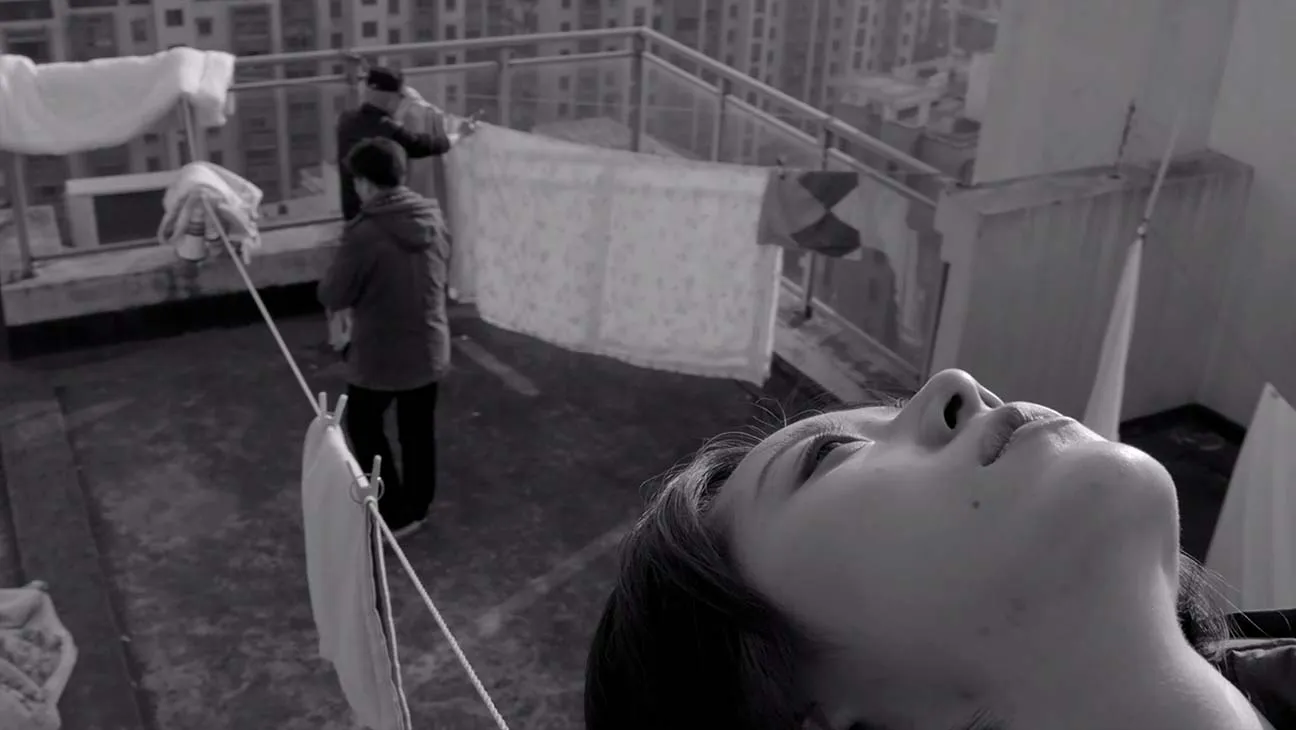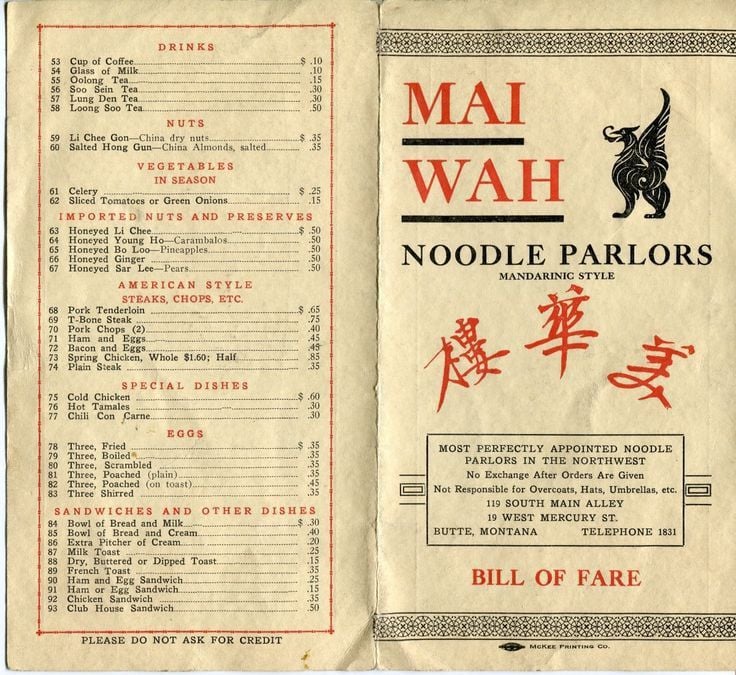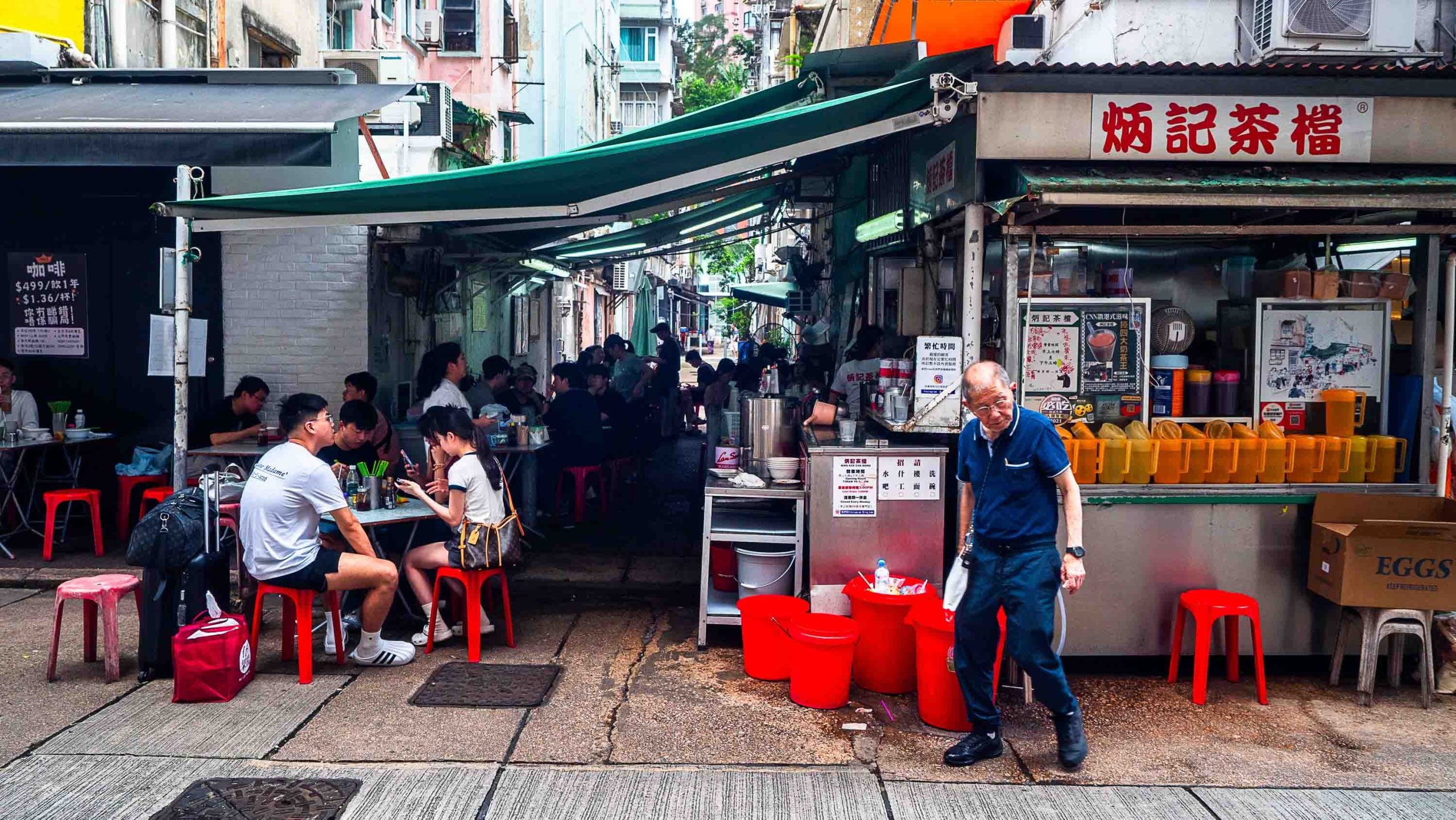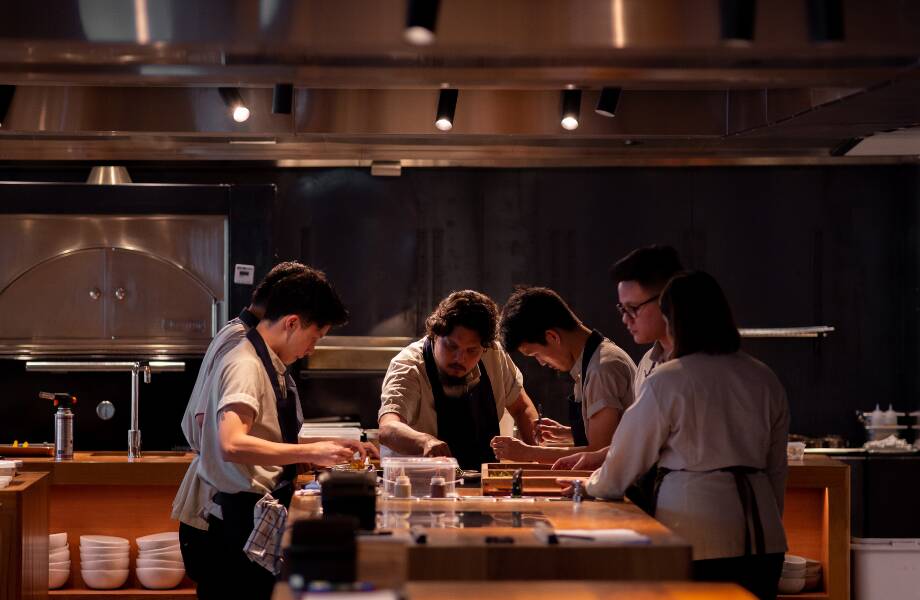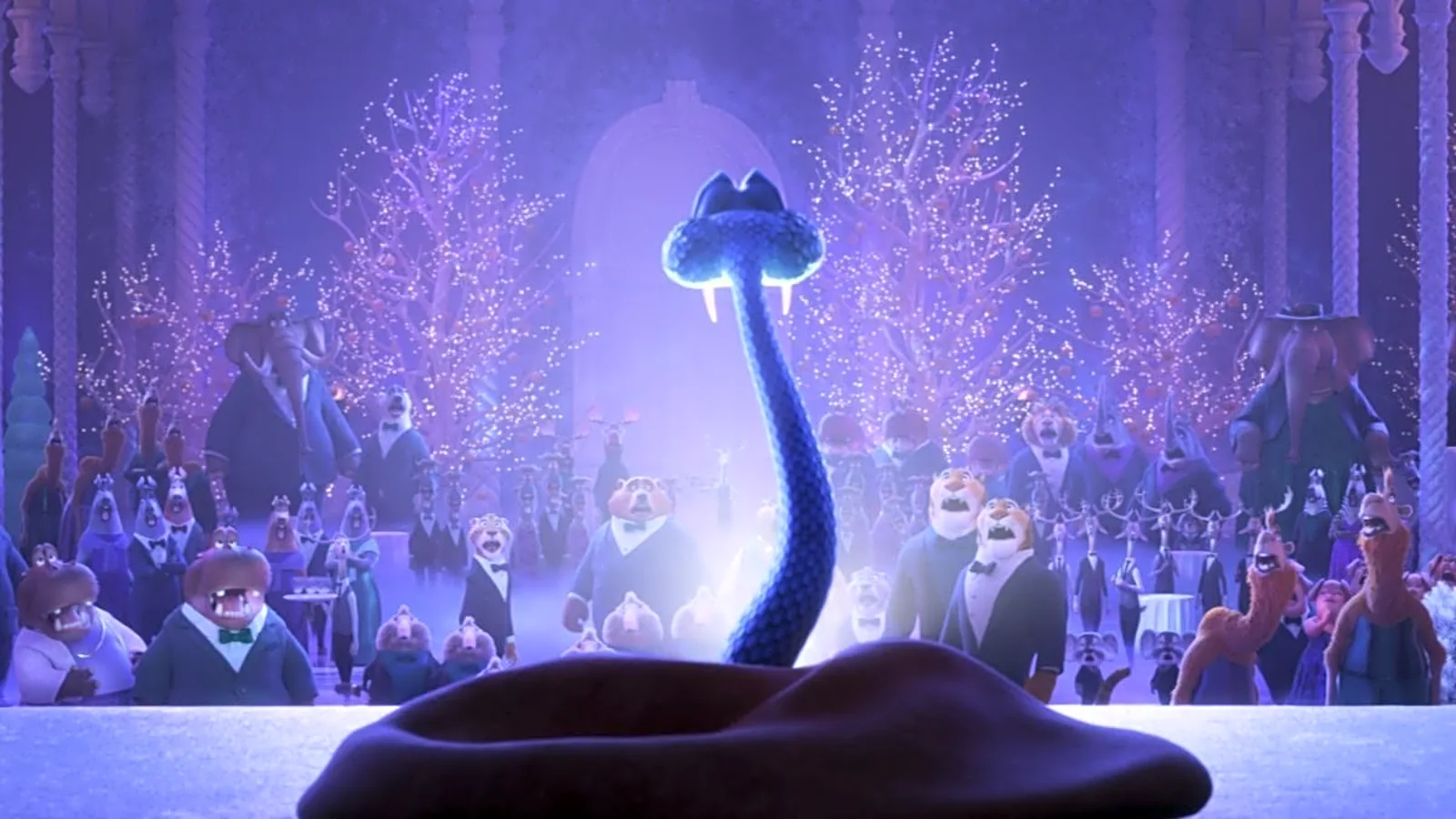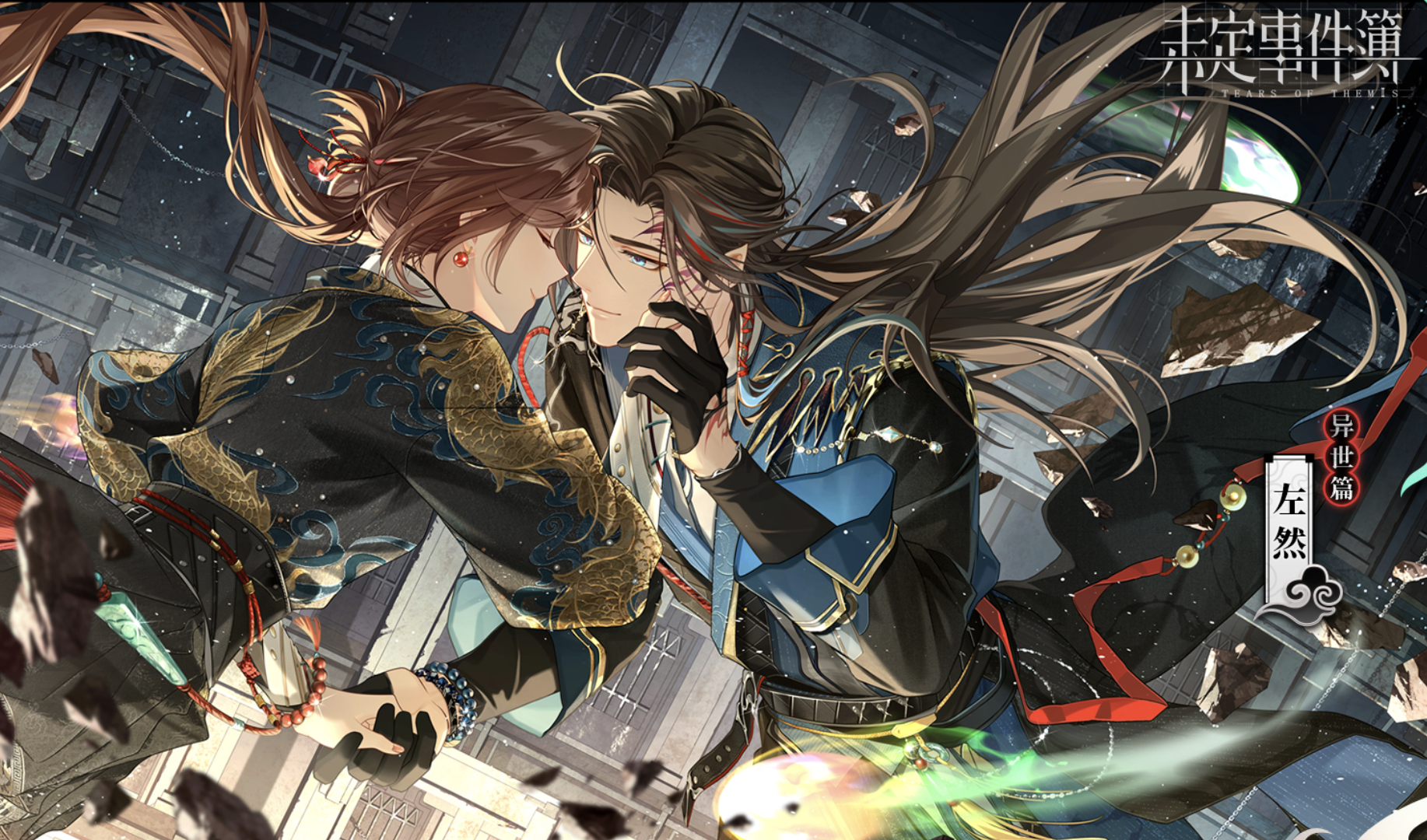Digital Existence is a new series where we explore how technology and the internet impact everyday people’s lives in China and beyond.
Amanda Li’s cooking video series is an informative walk through China’s millennia of food history, moving from ancient sculleries to modern kitchens to recreate ancient Chinese dishes. Like many other emerging food vloggers, Li has been using online video-sharing platforms to document her culinary creations and discoveries.

Li ‘time travels’ between ancient and modern times in her cooking videos. Screengrab via Bilibili
In an episode released in January 2020, she makes a noodle soup called bo tuo (馎饦), a typical breakfast dish for monks in China from the 5th to 6th century CE.
The recipe was documented in Qimin Yaoshu (齐民要术), the most wholly preserved collection of ancient Chinese agricultural texts, compiled during the Northern Wei Dynasty.
The video itself is part of Li’s 12-episode series What Did the Ancients Eat. Li, one of the most popular food vloggers in China, with more than 2 million followers on the Chinese streaming site Bilibili, recreates one dish from ancient China in each episode.

Li makes a noodle soup called bo tuo, a common breakfast dish for monks in China from the 5th to 6th century CE. Screengrab via Bilibili
If you didn’t already know, Chinese cuisine is one of the oldest food cultures globally, dating back to the first millennium BCE. Interestingly, you can still find some ancient recipes on menus today, such as the world-famous Peking duck, which originated 600 years ago, and Hangzhou’s Song Sao fish (西湖醋鱼), which dates back to the 11th century CE. However, many other dishes have disappeared over the years and now only exist in ancient books.
However, food vloggers like Li are dipping into these archives and taking inspiration from literature and TV dramas in an attempt to revive long-forgotten dishes while telling the stories behind them.
Reviving Ancient Tastes
Li has collected more than a dozen cookbooks from ancient China, in addition to poems and other pieces of literature that mention food by the likes of famous poets Su Shi and Du Fu.
She says that many people think of ancient food as plain and simple due to limited raw materials and primitive cooking techniques. However, through her culinary experiments, she discovered that people in ancient times developed advanced cooking skills, a finding that she tries to incorporate in the video series.
“I try my best to use original recipes and raw materials,” Li says. “The purpose of my video series is to show audiences what people actually ate in ancient China.”
Li recreates lu bei chicken (炉焙鸡) in one episode, a simple chicken dish cooked with rice wine and vinegar, the recipe for which she found in an ancient cookbook titled Wu’s Recipes (吴氏中馈录). In the video, she dresses in hanfu, as if she is actually Chef Wu.
In an explanation showing her incredible attention to detail, she tells us that she wanted to use an old-style utensil called xuanzi (镟子), which is briefly mentioned in the book, to make sure the chicken was cooked in the most authentic way. Unfortunately, the cookbook didn’t explain what xuanzi is, and Li was forced to go through books and museum archives for a more accurate and detailed description of the item.
It turned out to be an alcohol warmer, as Li explains in her video while showing a picture of xuanzi in a Ming Dynasty textbook she had found.

In an elementary school textbook from the Ming Dynasty, Li found a drawing of xuanzi. Screengrab via Bilibili

Pour alcohol into the xuanzi, which is floating on hot water, to warm it. Screengrab via Bilibili
The utensil is still used today in some parts of the country, but mainly as a metal pot for bean-curd making.
Li shares her journey to discover and learn more about the xuanzi in her video. Explaining the benefit of her search for more information on the utensil, she says, “In the process of digging up whether a utensil exists, I can learn a lot about history and culture.”
Chinese Drama TV Dinners
Fans of food and TV shows will know that Chinese historical dramas often feature sumptuous, multi-course royal banquets. For example, the 2018 drama Ruyi’s Royal Love in the Palace includes so many food scenes that actors joked about how much time they spent memorizing the names of all the dishes.
Of course, you won’t see the actors making these dishes from scratch, so food vloggers have stepped in to fill this void, teaching curious minds about these traditional dishes and how to make them.
Another Bilibili food creator, Chen Cheng, draws inspiration from some of her favorite childhood TV shows, such as the 2009 Hong Kong TV series Beyond the Realm of Conscience and the 2011 Chinese drama Palace.
Her most popular video is a recreation of a lotus pastry featured in Beyond the Realm of Conscience. To make the dessert look like the dish highlighted in the show, she tops it with golden petals.

Chen Cheng fries her doughy creation in hot oil. GIF via Bilibili
Hao Zhenjiang, also known as Chef Hao, is an award-winning chef who has presented his culinary creations at China’s state banquets. In 2019, he joined the hordes of online food vloggers and brought his culinary dreams to video-streaming platforms: recreating dishes from Dream of the Red Chamber, one of China’s Four Great Classic Novels.
Dream of the Red Chamber follows the rise and fall of a wealthy, aristocratic clan during the Qing Dynasty and provides insight into China’s social and political structures at the time. It also details the food and drinks consumed by elites during that era.
Hao’s channel, Red Chamber Feast (红楼宴 Honglou Yan), was created on Bilibili with the help of producer Wang Jing in 2019 and has attracted more than 150,000 subscribers.
“You can’t talk about traditional Chinese culture and food without mentioning Dream of the Red Chamber. Some statistics show that food-related content accounts for one-third of the book,” the production team behind Red Chamber Feast tells RADII.
Hao began learning how to make the dishes mentioned in the novel 30 years ago when he interned at a restaurant in Beijing. He has since dedicated his life to recreating all the dishes from Dream of the Red Chamber.
“Red Chamber Feast is where we introduce traditional Chinese culture to the world,” the production team says. The channel shows the process of making traditional dishes from the novel and TV adaptations and explains the cultural implications of these dishes.

In one video, Chef Hao recreates an eggplant dish described in great detail by the classic novel’s author. Screengrab via Bilibili
As a result, the production team believes that their videos are excellent learning resources. Among those who have commented on the channel to show their appreciation for the videos are teachers who use them to help their students better understand the novel, high school students, and viewers encouraged to read or re-read the book.
“Our fans also suggest recipes and stories from the novel [for us to film] in the comments. They also discuss the content there. We’ve learned a lot from our followers,” says the team behind the channel, adding that the internet has provided a unique way for China’s youth to learn about traditional culture.
“Video has become a new carrier for culture. It’s convenient for more and more young people to participate in [learning and sharing culture],” says the production team.
A Song Dynasty Food Story
Chu Qiu (social media handle), a Hangzhou-based ecommerce businesswoman, started a Bilibili channel in 2020 dedicated to recreating traditional food from the Song Dynasty. This era of history offers a compendium of food and culinary arts, such as tea ceremonies.
“[Tea ceremonies] are a fantastic — romantic — way of making and drinking tea,” Chu Qiu says. “Though it was complicated and time-consuming, the Song emperors and scholars enjoyed challenging each other during dou cha.”

Chu Qiu is a Hangzhou-based ecommerce businesswoman and food vlogger. Image via Chu Qiu
Dou cha (斗茶, or ‘tea fight’ in English) was a popular activity in the Song Dynasty, with people competing to make the best tea with the most beautiful foam on top, the brightest color, and the best taste. You might even contextualize it as an ancient barista competition.
To learn more, Chu Qiu visited Jingshan Temple — the birthplace of dou cha — in Hangzhou, the 12th-century capital of the Southern Song Dynasty and the present-day provincial capital of Zhejiang province. She spent three months learning and documenting the tea ceremony there.
Chu Qiu says that she favors recipes with stories, such as the seasonal dishes from the memoir The Eastern Capital (东京梦华录) and cookbook Shanjia Qinggong (山家清供), both written during the Song Dynasty.
In one of her most popular videos, which has gained more than 140,000 views, Chu Qiu recreates a multi-course Lunar New Year’s Eve dinner from the Song Dynasty. As part of that process, she selected recipes from books, purchased raw materials from local vendors, brewed Toso liquor (屠苏酒) with Chinese herbs, and made noodle soup.

Chu Qiu’s scrumptious and traditional New Year’s Eve dinner. GIF via Bilibili
Even though many dishes featured in her videos do not exist anymore, she’s glad to see that some recipes can still be found in parts of modern China.
“I sometimes see people comment that they’ve seen certain dishes in their hometown, with most of them from Guangdong or Fujian province,” Chu Qiu says. “These are the moments when I realize that the legacy of traditional food culture is being kept alive.”
Video streaming platforms like Bilibili are playing an integral part in this process, helping passionate Chinese foodies share their knowledge and research with a broader audience than ever before. Chu Qiu believes that the internet will become even more essential in preserving and creating connections between people and their culture and history.
“So many people are starting their own channels, and even more are consuming digital media,” she says. “My experience with the internet will help me share my creative cooking ideas with more people.”
Cover image courtesy of Amanda Li
